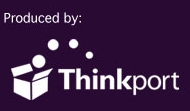
| Description |
| An interactive that allows students to explore
sources of greenhouse gases produced by human activity by
comparing carbon footprints in a 1930s town vs. a town of
today. VIEW THE INTERACTIVE |
| Background |
Scientists know with "virtual certainty" that the composition of Earth's atmosphere is changing. Ever since the dawn of the Industrial Age, the levels of greenhouse gases such as carbon dioxide have been rising. The buildup of these gases in the atmosphere has increased at the same time human activities that release these gases (such as burning fossil fuels) have also been on the upswing. Scientists say that human activities release roughly 7.1 GtC (7.8 billion tons of carbon) each year. (GtC stands for "gigatons of carbon," with a gigaton equaling approximately 1 billion tons) Approximately 3.2 GtC (3.5 billion tons) of this remains in the atmosphere and another 2.0 GtC (2.3 billion tons) diffuses into the oceans. (They aren't sure what happens to the remaining 1.9 GtC, though.) Clearly, this process is pumping a great deal of carbon dioxide into our atmosphere ... which, at 3479 ppm (parts per million) is higher than it has been in 400,000 years. Carbon dioxide concentration has varied in a range of 180 to 280 ppm for 400,000 years. Scientists can clearly demonstrate that Earth's temperature has also been rising. In the years between 1906 and 2005, it increased about 1.0 - 1.7°F in both hemispheres and over its oceans. Scientists also know that increased concentrations of greenhouse gases in our atmosphere tend to warm the planet. They therefore think that the rising levels of greenhouse gases in the atmosphere are contributing to climate change. In essence, what they are saying is that what we do now is having a direct effect on our atmosphere and our environment. And because the full effect of what we are doing will not be known for decades and decades, it is important to take stock now to see what we can do to avoid an even more-unimaginable climate crisis in the future. |
| For more information |
Human Activity and Climate Change |
| Learning Objective |
After working with this interactive, students will be able to identify human activities that produce greenhouse gases. |
| Standards Addressed |
|
| Can be used with existing lesson plans on |
Greenhouse gases; greenhouse effect; carbon footprint |
| Additional ways to use this asset to enrich your curriculums |
|
| Printable Resources |
| What we do Now... (PDF | Word) |





